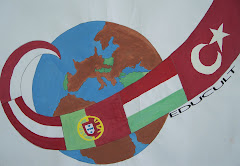
CASTELO DE ALMOUROL
7 years ago
This is a blog for sharing and publishing through the Comenius Project












.jpg)

 This town has a 15th Century castle and in the church is the impressive tomb of Afonso, the grandson of Nuno Alves Pereira, the saviour in the Battle of “Aljubarrota" fought in 1385.
This town has a 15th Century castle and in the church is the impressive tomb of Afonso, the grandson of Nuno Alves Pereira, the saviour in the Battle of “Aljubarrota" fought in 1385. 

 The Romans named the town Collipo and it was later also occupied by the Moors. Dom Afonso Henriques retook it in the 12th Century and it is recorded that in 1254 Dom Afonso III held the first form of parliament in Portuguese history to be attended by laymen. The Portuguese King Dom Dinis rebuilt in the 14th Century castle that acts as a crown over the town and turning it into a royal residence for himself and his Queen, Isabel de Aragon.
The Romans named the town Collipo and it was later also occupied by the Moors. Dom Afonso Henriques retook it in the 12th Century and it is recorded that in 1254 Dom Afonso III held the first form of parliament in Portuguese history to be attended by laymen. The Portuguese King Dom Dinis rebuilt in the 14th Century castle that acts as a crown over the town and turning it into a royal residence for himself and his Queen, Isabel de Aragon.
 The town is quite charming with small homes over archways and behind graceful arcades. As a reminder of its ancient history there is the 12th Century Church, Igreja de São Pedro. The town was declare
The town is quite charming with small homes over archways and behind graceful arcades. As a reminder of its ancient history there is the 12th Century Church, Igreja de São Pedro. The town was declare 

